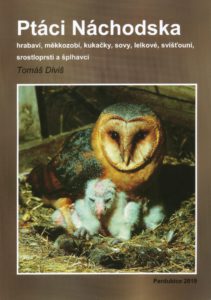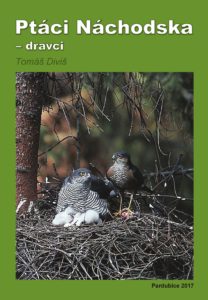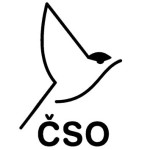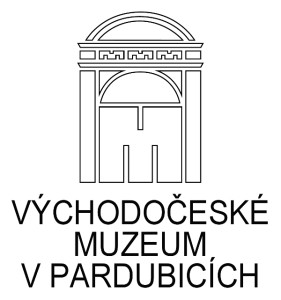
ZOO PRAHA 1/3
I have decided to start new year with a very brave deed – to write a review about a walk in Zoo Praha. It´s difficult to write it because I passed four years working there so I know the park not only as a visitor but also as an employee. I will try to put a piece of history to this journey over Zoo Praha from the period I passed there. This article is actual to the July 2009 when I suspended my contract with the zoo because of a couple-of-month long scholarship (with some small actualisating). I have tried to bring it up to date so I hope nothing has not escaped to me.
I went there as a little boy so I have a very strong cordial relationship with the zoo. Every time I was enjoying the bird expositions and then some elephant or giraffe were not able to break through „one coloured fowl on the yard“. I remember until now when I was in the third class of my basic school, I climbed over the fence into the flamingos exposition to stole one nice red feather and later at home it was devoured by mothes. It makes me red until now remembering it. Maybe that´s one of the reasons why I was so angry when in the 2002 during the inundation everyone pointed out a death of one elephant, one hippo female and one gorilla male and nobody was interested in more than 100 bird tombs. The zoo came to its top in the period of Dr. Zdeněk Veselovský, the most famous czech ornithologist, who emphasized the zoological values of the park. A lot of rare species passed through there – e. g. Puna Flamingos (Phoenicoparrus jamesi) or Harpy Eagles (Harpia harpyja).
I would like to start our walk at the Humboldt Penguins´ (Spheniscus humboldti) exposition in the lower part of the zoo where they share a common swimming pool with the Crested Ducks (Lophonetta specularioides). I remember from my childhood´s years they also bred some pinguins of the Eudyptes genus (I do not remember which one it was, I remember only they were three). Sometimes you can observe the Common Moorhens (Gallinula chloropus) in their exposition. This species has a very strong wild population here. It is possible to observe a huge scale of fabulous life phenomenons because they are adapted to the human presence so they are as common as feral pigeons here. In no case they cannot compete to a strongly increasing population of the Mallards (Anas platyrhynchos) which is notable mainly in the couple of ponds called “Laguna” – my colleagues reputedly counted more than 800 birds per one winter! There are some raptor aviaries next door to the pinguins exposition. Cinereous or Eurasian Black Vulture (Aegypius monachus) occupy the first and the third together with Egyptian Vulture (Neophron percnopterus). The both species are succesfuly reproducing here. In the next aviary it is possible to see a pair of Bald Eagles (Haliaeetus leucocephalus) every year breeding their chicks. In the last one you can see a growing family of Common Ravens (Corvus corax). Next door to them there´s one inconspicuous aviary in the shadow inhabited by a group of Great Grey Owls (Strix nebulosa). Few people usually note there´s an aviary so they can live in the calm there. On the other hand, it is impossible to miss two aviaries with Steller´s Sea Eagles (Haliaeetus pelagicus) because of their noisy “singing”. Cleaning of the Red-legged Seriemas´(Cariama cristata) exposition sometimes can remember an action movie because they are not very tolerant to the people. During the summer a pair of tropical Bateleurs (Terathopius ecaudatus) shifts the White-necked Ravens (Corvus albicollis) which are more resistent to the freeze. Across the path there´s a spacious run for the african water antilopes where during the summer you can see a Marabou Stork (Leptoptilos crumeniferus). It is possible to see the Night Herons (Nycticorax nycticorax) nests above the Lowland Tapirs exposition as much as in other parts of the zoo. The population was artificially created of the animals bred here and after it was enriched by the wild birds. American Flamingos (Phoenicopterus ruber) and Chilean Flamingos (Phoenicopterus chilensis) inhabit a spacious lagoon near there. The second species is already succesfully bred in Praha for many years. They share the exposition together with a pair of Spectacled Ducks (Speculanas specularis) and a small group of West Indian Whistling Ducks (Dendrocygna arborea).
An extended pheasantry adjoins to the flamingos lagoon. Lower aviaries are very big and spacious. One of them is inhabited by a pair of Buffy Fish Owls (Ketupa ketupu). Our zoo has this species as one of the six in all Europe and we together with Walsrode are the only who have reproducted them until now. That´s a great result – the same as a reproduction of the Rhinoceros Hornbills (Buceros rhinoceros), neighbouring next door to an aviary of the Great Hornbills (Buceros bicornis). In the middle aviary you can see a pair of excellent Great Arguses (Argusianus argus), Black-throated Laughingthrush (Garrulax chinensis) and a couple of pigeon species. In the inventory of our pigeon and laughingthrush/babbler richness I have to calm myself because our zoo is probably one of the richest in these bird groups. Zoo Praha currently has 20 species of laughingthrushes and babblers and 22 species of pigeons. Some colleagues rechristened the pheasantry to “the dovecote”. In the inner space of the pheasantry there´s an empty run possible to see from outside. It was inhabitted by a Common Crane (Grus grus) male called Honzík for a long time but he was deposited to Italy. The upper line of the aviaries is composed of the ancient woody cages where is impossible to see something for a visitor. But despite of it, these aviaries are very good in the birds reproduction. There are some song birds include Red-billed Chough (Pyrrhocorax pyrrhocorax ), (also) next pigeon species and a Blue-crownet Motmot (Momotus momota). White-eared Pheasants (Crossoptilon crossoptilon) and a pair of old Capercaillies (Tetrao urogallus) share the space with some songbirds. I cannot forget a pair of Eurasian Pygmy Owls (Glaucidium passerinum).
Across the path in front of the elephants pavilion there are the next aviaries inhabited by some songbirds species (e. g. Fawn-breasted Bowerbird – Chlamydera cerviniventris), the third part of the pigeons collection, a lonely widower of the Tawny Frogmouth (Podargus strigoides), Speckled Mousebirds (Colius striatus), Bearded Barbets (Lybius dubius), Eastern Yellow-billed Hornbill (Tockus flavirostris), White-bellied Go-away-birds (Corythaixoides leucogaster), a pair of rare Crested Firebacks (Lophura ignita) and a lonely cock of the Crestless Fireback (Lophura erythrophthalma) which the zoo owns as one of seven in Europe. During our slow walking we can arrive to a big raptors aviary, one of a few constructions surviving from the communist period and still considered as suitable to breed the birds. It is inhabited by Eurasian Black and Egyptian Vultures mentioned above and one Red Kite (Milvus milvus). During their feeding, the aviary is full of Black-billed Magpies (Pica pica) parasiting on their food.
We can continue with a path around a group of small ancient aviaries where all the parrots collection was located until recently. Currently, you can see here only few parrot species: some amazons, Monk Parakeets (Myiopsitta monachus) and the rest of the macaws collection with the White Cockatoos (Cacatua alba). The next species placed here are Siberian (Zoothera sibirica) and Black-breasted Thrush (Turdus dissimilis) and four species of small owls including Little Owl (Athene noctua) placed next door to the macaws aviary. I have never seen it in the dense vegetation during my four years passed here despite of the fact it lives there (or well, my colleagues say it…).
The macaws exposition is not well-done because in the warm days the birds are placed onto the opened space with cutted wings. You can see the similar exposition e. g. in Dvůr Králové. The basic disadvantage is that the parrots are not adapted to walk but to climb and then the birds suffer with the bruises of their legs. Their breeders attended on this fact many times but with no success.
If we take the opposite direction at the big raptors aviary, we meet one big pond with a succesful breeding group of Dalmatian Pelicans (Pelecanus crispus). The next aviary is the Delta of Danube with mainly european species of water birds. There´s a big breeding group of Eurasian Spoonbills (Platalea leucorodia) and Glossy Ibises (Plegadis falcinellus) which grows geometrically from one year to another. Their neighbours are Northern Lapwings (Vanellus vanellus), Eurasian Oystercatchers (Haematopus ostralegus), Eurasian Teals (Anas crecca), Smews (Mergus albellus) and Red-breasted Mergansers (Mergus serrator – except of Germany this species is bred in four european zoos only).
African aviary is well-planted during the time of its existence so it does not already look like the steppe only. You can see here a big breeding group of Northern Bald Ibises called also Waldrapps (Geronticus eremita). This species reproducts in the zoos well and grows very rapidly but you cannot see them in the nature except of very few sites in the least. During the warm summer one pair of the next ibis species, Hadada (Bostrychia hagedash) is also placed here together with Yellow-billed Storks (Mycteria ibis). Other inhabitants of the aviary are the breeding group of Rock Pigeons (Columba livia), a pair of Yellow-necked Spurfowls (Francolinus leucoscepus) and Vulturine Guineafowls (Acryllium vulturinum) – it is possible to hear them around all the lower part of the park. A strongly territorial pair of African Wattled Plovers (Vanellus senegallus) defends their territory and they drive out everybody they do not like (it is possible to see this species only in Praha, Plzeň, one portuguese park and one german zoo). Small pond is inhabitted by three threatened species of waterfowls which are possible to be observed also in Europe – Garganeys (Anas querquedula), Marbled Ducks (Marmaronetta angustirostris) and White-headed Ducks (Oxyura leucocephala).
I give you a small suggestion to stay one month here in Africa and to make a tour over here because our next journey leads us over all Old World. I think that´s not so bad to travel through the warm parts of the world in January. In the next part I will write you how Zoo Praha lets out the Black Storks to the nature, what´s the breeding success of the biggest european raptors, which crane species is well-reproducting in the captivity and how Mr. Oriole knocked us off balance. See you in February.
Author of this article is not a native speaker so if there are some faults, please let me know.
Petr Suvorov


















